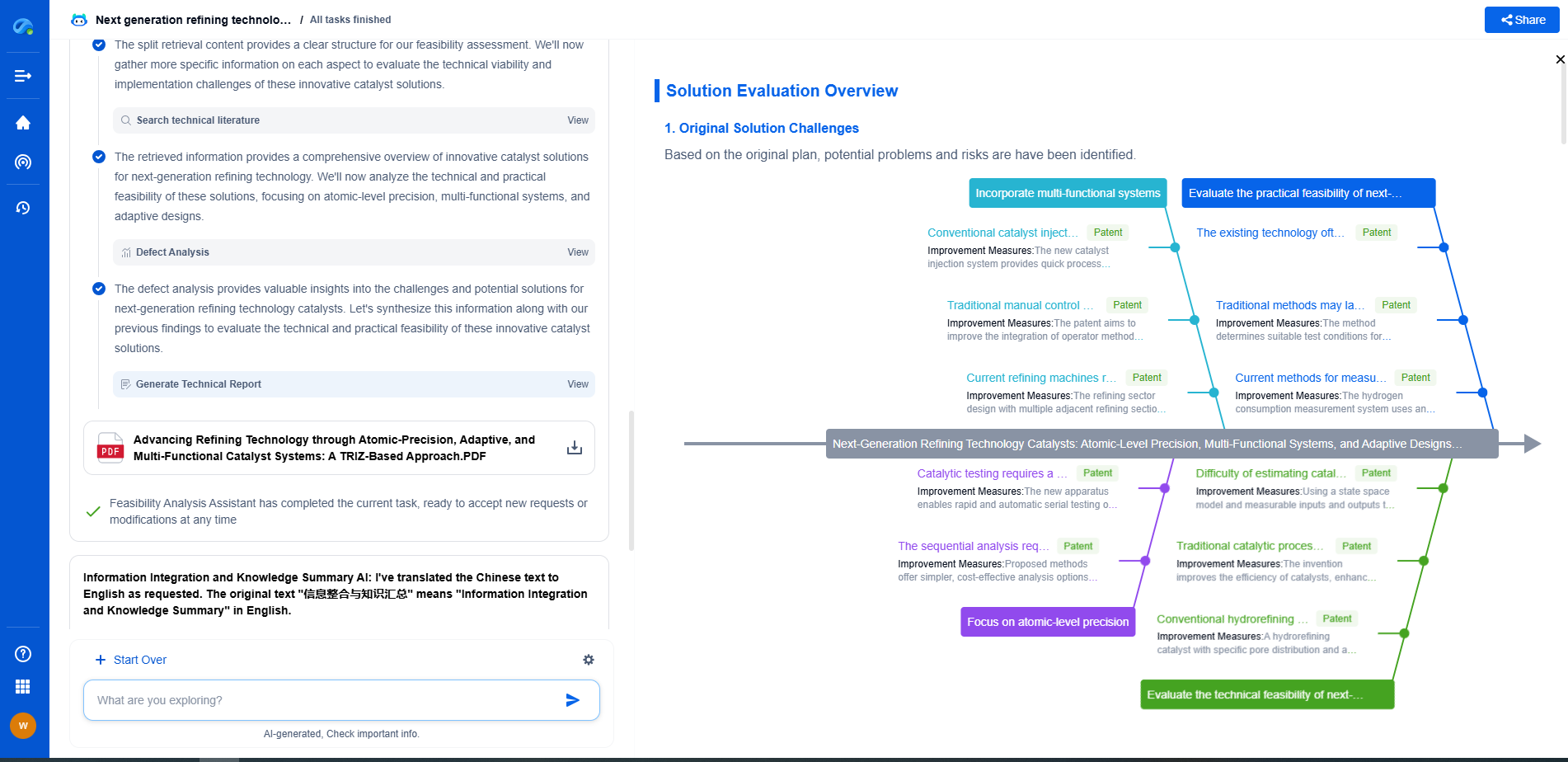Battery Safety Ratings Compared: UL 1642 vs IEC 62133
JUN 20, 2025 |
In the rapidly evolving world of electronic devices, the role of batteries is indispensable. With their ubiquitous presence, ensuring battery safety has become a paramount concern for manufacturers and consumers alike. Two of the most prominent safety standards in the battery industry are UL 1642 and IEC 62133. Though both serve the same fundamental purpose of ensuring the safe operation of batteries, there are key differences in their scope and application. This article aims to shed light on these standards, providing a comprehensive comparison to help you understand which might be more applicable to your needs.
What is UL 1642?
UL 1642 is a safety standard developed by Underwriters Laboratories specifically for lithium batteries. This standard primarily focuses on the safety aspects related to the cells used in consumer electronic products. UL 1642 sets forth guidelines and testing procedures to evaluate the safety performance of lithium batteries, ensuring they are capable of withstanding conditions like overcharging, short-circuiting, and exposure to high temperatures without causing a fire or explosion. The standard also addresses potential hazards associated with mechanical abuse, such as crushing or impact. UL 1642 is widely recognized in North America and often considered a benchmark for battery safety in consumer electronics.
Delving into IEC 62133
IEC 62133, on the other hand, is an international standard issued by the International Electrotechnical Commission. This standard covers both nickel and lithium battery chemistries, making it broader in scope compared to UL 1642. IEC 62133 outlines safety requirements and testing for rechargeable batteries intended for use in portable applications. This includes laptops, mobile phones, and other handheld devices. The standard is divided into two parts, with Part 1 focusing on nickel-based batteries and Part 2 on lithium-ion and lithium polymer batteries. IEC 62133 emphasizes not only the safety of the individual cells but also the entire battery pack, ensuring comprehensive safety measures are in place.
Comparing the Testing Procedures
A critical aspect of both UL 1642 and IEC 62133 is their testing procedures, which are designed to simulate conditions that could potentially harm the battery or the device it powers. UL 1642 involves rigorous testing such as environmental, electrical, and mechanical assessments. This includes tests for overheating, short circuit, and forced discharge. IEC 62133, while similarly comprehensive, places a greater emphasis on the overall battery pack, addressing factors such as protection circuits and cell assembly. It includes tests for vibration, altitude simulation, and thermal abuse, ensuring the battery's resilience under varied environmental conditions.
Global Reach and Acceptance
When considering which standard to adhere to, the geographical market plays a significant role. UL 1642 is predominantly recognized in North America, often serving as a crucial requirement for products entering the U.S. market. IEC 62133, conversely, enjoys broader international acceptance, particularly in Europe and Asia, making it a preferred choice for manufacturers aiming for a global reach. Many countries outside the U.S. require compliance with IEC 62133 for imported electronic devices, reinforcing its international significance.
Choosing the Right Standard
Deciding between UL 1642 and IEC 62133 largely depends on the nature of your product and the markets you intend to enter. For consumer electronics targeting the North American market, UL 1642 provides a robust framework for ensuring battery safety. However, for products aimed at a broader international audience, compliance with IEC 62133 may be necessary to meet regulatory requirements across various regions. Moreover, considering the type of battery chemistry used in your product can also guide your decision, given IEC 62133's division into separate parts for nickel and lithium chemistries.
Conclusion
In conclusion, both UL 1642 and IEC 62133 are pivotal in ensuring battery safety, each with its unique strengths and areas of focus. While UL 1642 is deeply rooted in North American safety standards for lithium batteries, IEC 62133 offers a more global perspective with its inclusion of nickel-based technologies. Understanding the nuances of each standard, including their specific testing procedures and geographical acceptance, can help manufacturers make informed decisions, ultimately leading to safer and more reliable electronic products for consumers worldwide.
Accelerate Breakthroughs in Fuel Cell and Battery Innovation—with the Power of AI
From solid-state battery breakthroughs to high-efficiency hydrogen fuel cells, keeping pace with fast-evolving chemistries, global patent landscapes, and emerging application pathways is an ever-growing challenge for R&D and IP professionals.
Patsnap Eureka, our intelligent AI assistant built for R&D professionals in high-tech sectors, empowers you with real-time expert-level analysis, technology roadmap exploration, and strategic mapping of core patents—all within a seamless, user-friendly interface.
Whether you're optimizing cathode formulations, evaluating electrolyte stability, or navigating the crowded patent space around battery pack design, Eureka empowers you to move faster and with greater confidence.
Start your journey with Patsnap Eureka today—streamline your research, enhance decision-making, and power the future of energy with AI-driven clarity.
- R&D
- Intellectual Property
- Life Sciences
- Materials
- Tech Scout
- Unparalleled Data Quality
- Higher Quality Content
- 60% Fewer Hallucinations
Browse by: Latest US Patents, China's latest patents, Technical Efficacy Thesaurus, Application Domain, Technology Topic, Popular Technical Reports.
© 2025 PatSnap. All rights reserved.Legal|Privacy policy|Modern Slavery Act Transparency Statement|Sitemap|About US| Contact US: help@patsnap.com

